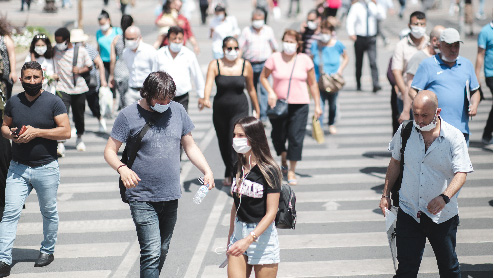Abstract
Background: We studied risk factors, antibody responses, and symptoms of SARS-CoV-2 infection in a diverse, ambulatory population.
Methods: A prospective cohort (n=831, including 548 hospital-based healthcare workers) previously undiagnosed with SARS-CoV-2 infection was followed for six months with serial testing (SARS-CoV-2 PCR, specific IgG) and surveys.
Results: 93 participants (11.2%) tested SARS-CoV-2-positive; 14 (15.1%) were asymptomatic and 24 (25.8%), severely symptomatic. Healthcare workers were more likely to become infected (14.2% vs. 5.3%, aOR 2.1, 95% CI 1.4-3.3) and have severe symptoms (29.5% vs. 6.7%). IgG antibodies were detected after 79% of asymptomatic infections, 89% with mild-moderate symptoms, and 96% with severe symptoms. IgG trajectories after asymptomatic infection (slow increases) differed from symptomatic infections (early peaks within 2 months). Most participants (92%) had persistent IgG responses (median 171 days). In multivariable models, IgG titers were positively associated with symptom severity, certain comorbidities, and hospital work. Dyspnea, altered smell and taste, and other neurologic changes persisted for ≥120 days in ≥10% of affected participants. Participants with prolonged symptoms (generally more severely symptomatic) had higher antibody levels.
Conclusions: In a prospective, ethnically diverse cohort, symptom severity correlated with the magnitude and trajectory of IgG production. Symptoms frequently persisted for many months after infection.

